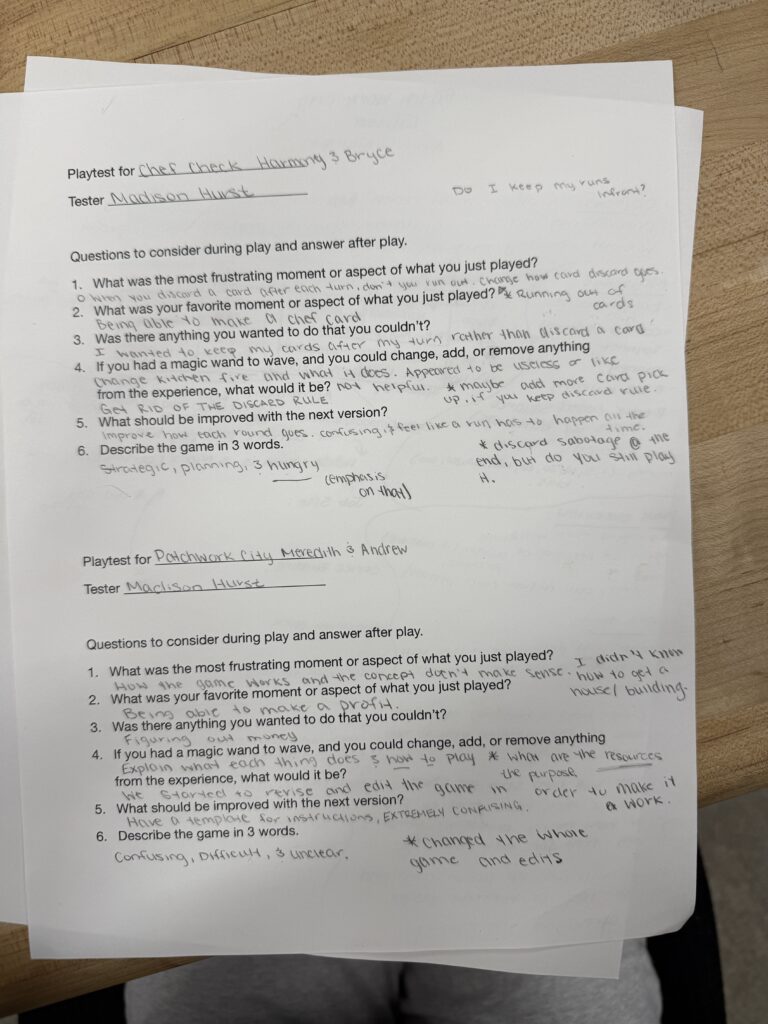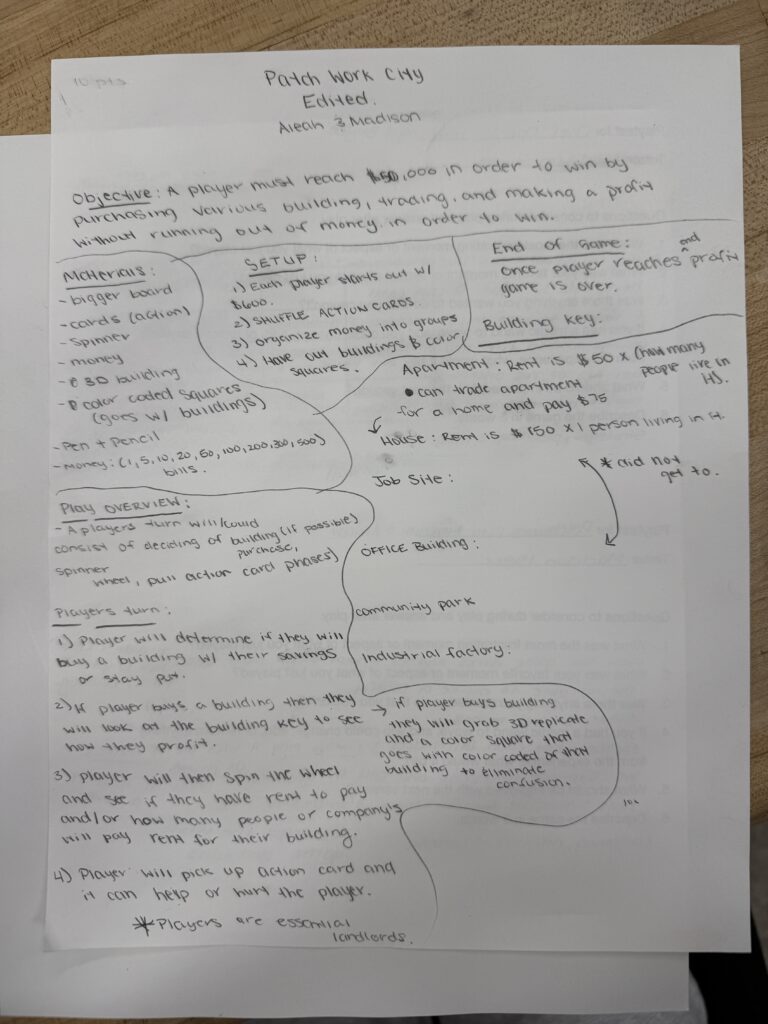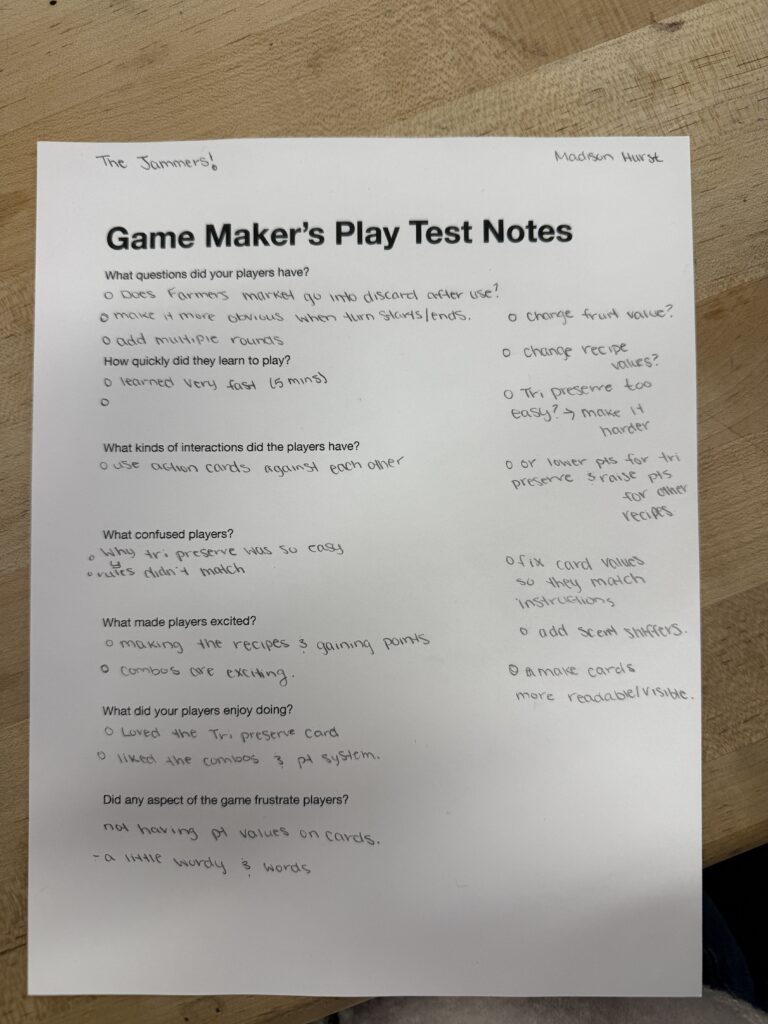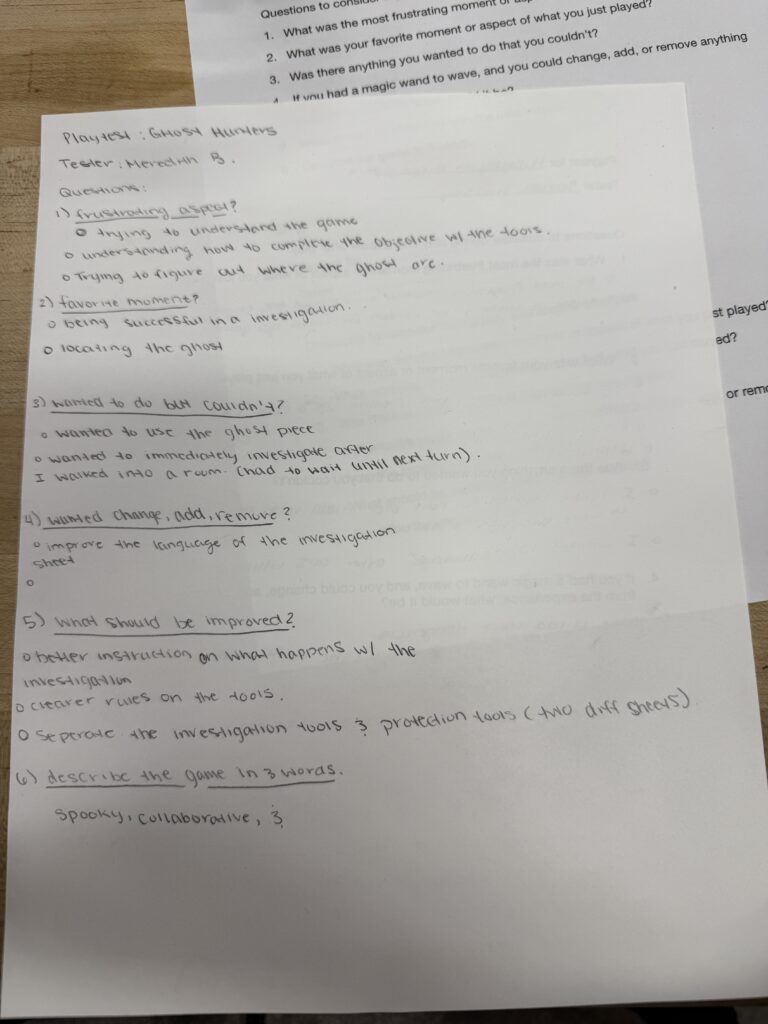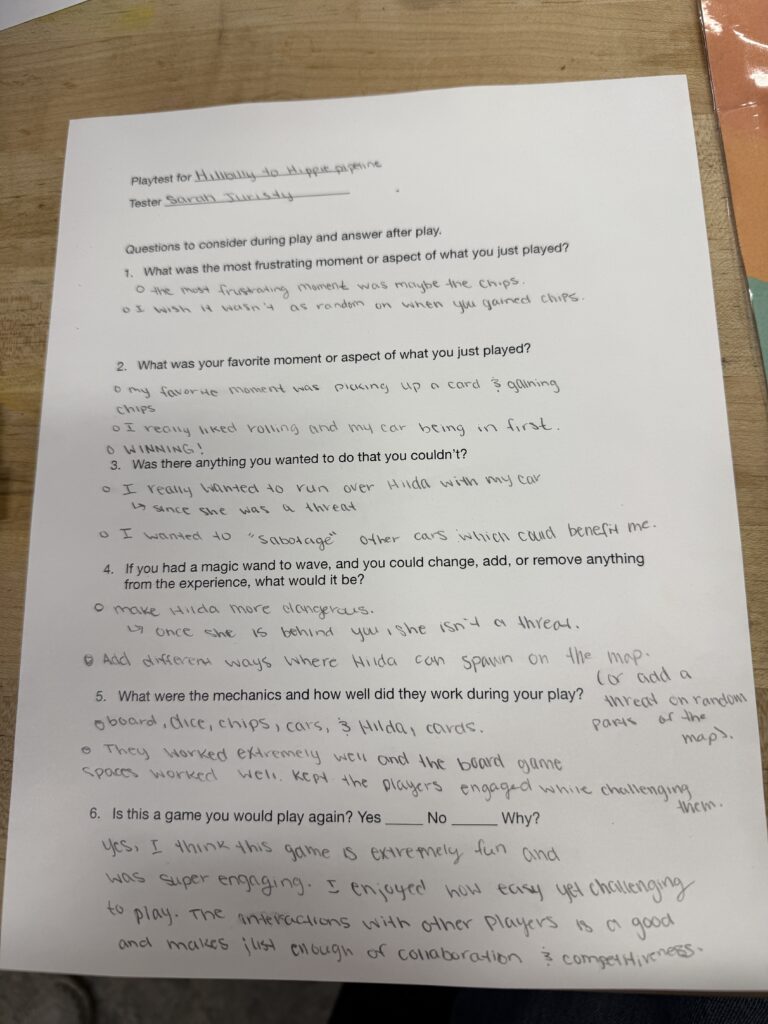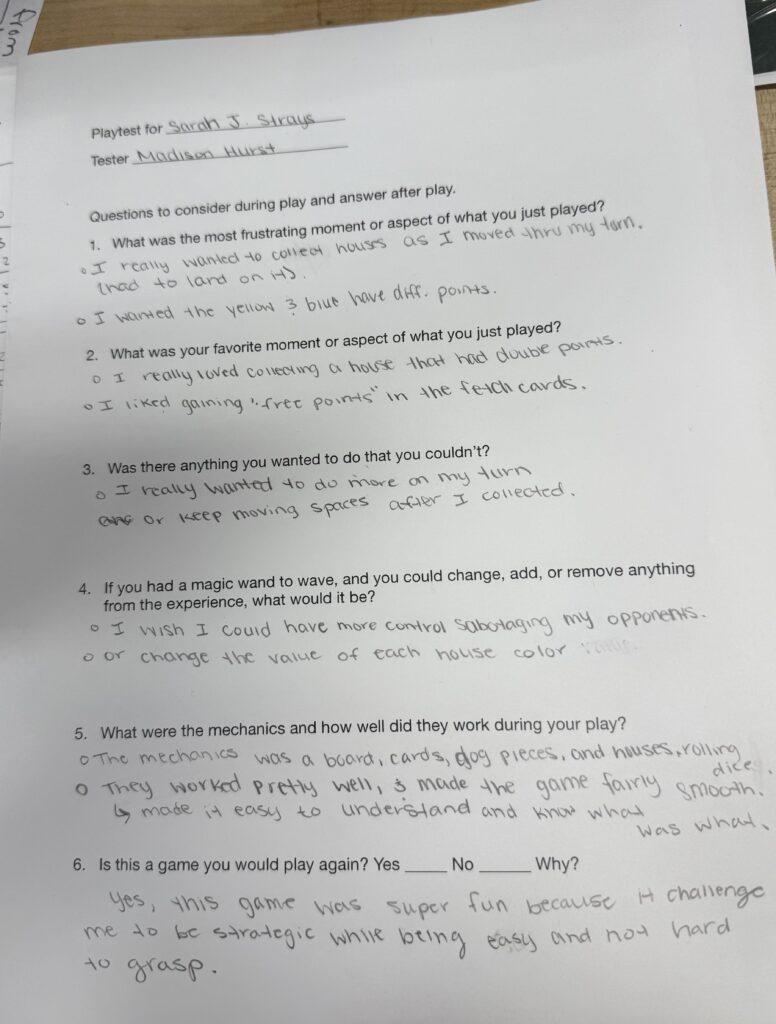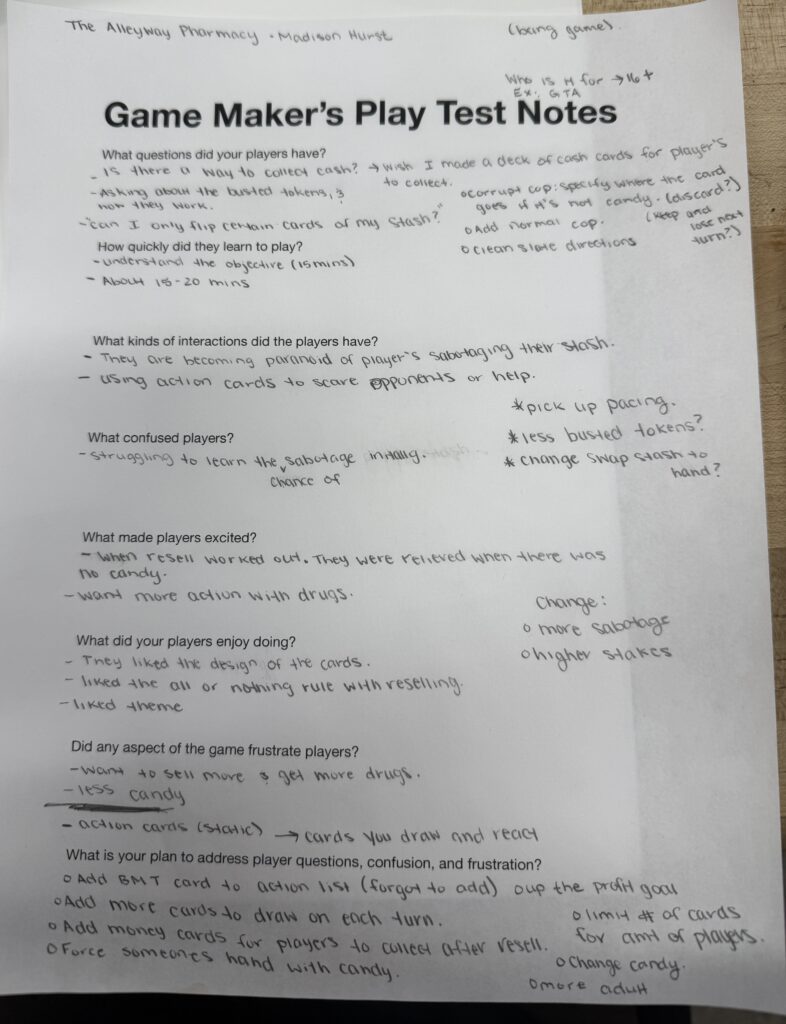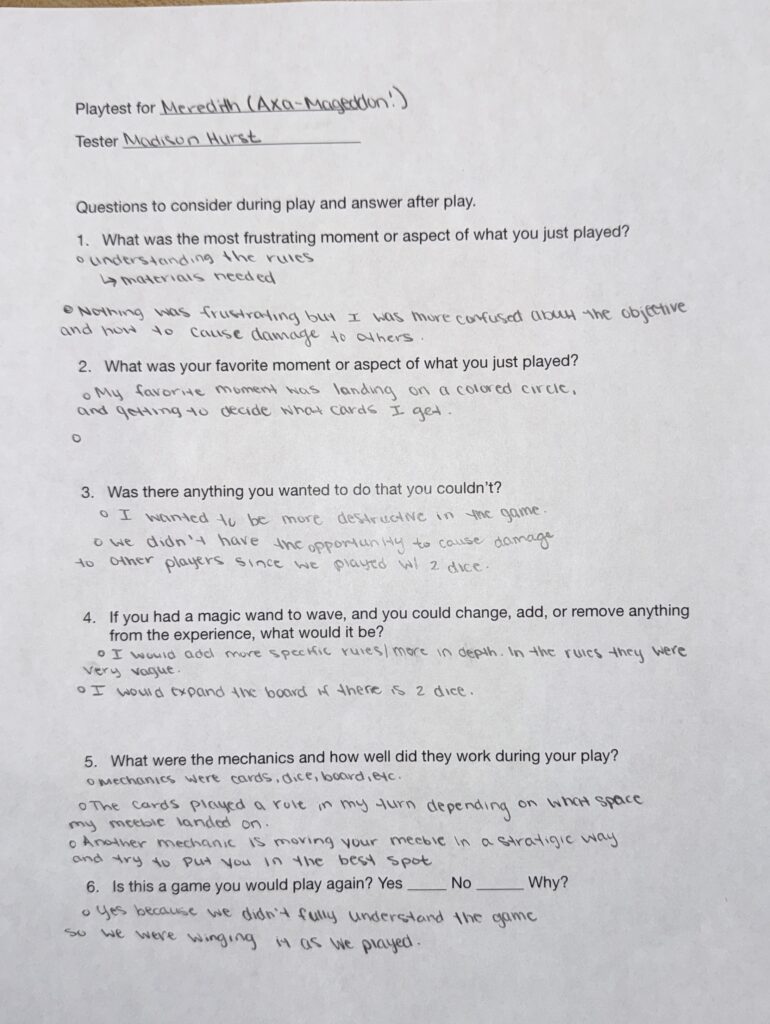Madison Hurst
Was it fun? I felt that Carcassonne was fairly good. I enjoyed the concept of placing the tiles to build a unique and creative map. I liked the simplicity of the mechanics but it was not the most engaging game. It was enjoyable at times but it took a long time to complete and there were lots of moments where not much was occurring.
What were the player interactions? The player interactions were based on chance, whether that was what tile you picked up or how people chose to place their tiles. You can’t really affect other players’ decisions but depending on how you play your tiles and meeples, it can impact how other players might choose to play.
How long did it take to learn? It didn’t take too long to learn, the rules were very straight forward as well as the point system.
What was the most frustrating moment or aspect of what you just played? I would say that the most frustrating part of the game was the length and scale. The winner was whoever had the most amount of points after all the tiles were played. This took up lots of space and time. Also the pieces were very easy to knock out of place, which could cause confusion because the flow of roads and buildings mattered.
What was your favorite moment or aspect of what you just played? My favorite aspect of the game was that it was a simple game. There were set rules for how to play and how to keep score. There were a lot of moving parts but the simplicity made it easy to follow.
Was there anything you wanted to do that you couldn’t? I wish that you could complete different structures without having to have all sides match. This would have a new strategy to the game because you could sabotage what other people are trying to create and how they have placed their meeples.
If you had a magic wand to wave, and you could change, add, or remove anything
from the experience, what would it be? I would add the ability to complete a structure or road without needing to match all sides.
Is this a game you would play again? No, because in the long run it was not a very engaging game. There were fun parts of it but over all across the whole game there was not a lot that kept us players fully focused on the game. It was easy and flowed but not an entertaining pace. In the pandemic it was hard to learn but every turn there was something different that could throw players off or help us get closer to winning.
Analyze the game using the 3 act structure. In the first act of the game we are just setting up the game and board, there were not many tiles on the table or points being scored. Just players setting up different avenues for where they might be able to gain points in the future. Players are also learning how to place their tiles and meeples to build connections and earn points.
In the second act of the game players are creating more strategy when it comes in as players start to expand their tiles and start to earn points. The board is growing and more meeples are placed to hopefully gain points in the future. Players are more specific about where they are placing their tiles to help benefit themselves.
In the third act players are incorporating farming and adding up their points. The board has become quite large with many different complete roads, monasteries, and castles. At the very end all tiles should have been played.
What are the collaborative and or competitive aspects of the game? Carcassonne has a lot of competitive aspects but not many collaborative ones. The competitiveness comes from the players fighting to score the most points and “out meeple” other players to restrict them from gaining points. There is a little bit of collaboration between players because a player’s action can influence where someone else places their next tile.
What is the game’s metaphor and which of the game’s mechanics stand out? The game’s metaphor is about shaping and claiming the landscape. As if you are watching a countryside develop piece by piece. A mechanic that stood out to me was how unfinished tiles like half built roads and cities can still influence the game. This created different routes of strategy choosing between getting guaranteed points or to keep building for more points in the future.

